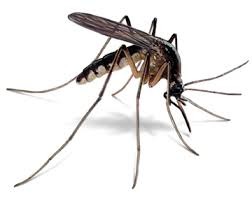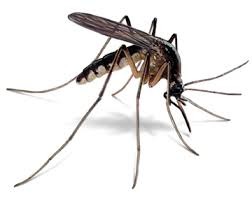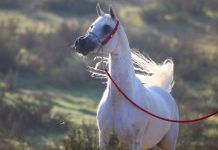Words by Susan Kirwan BVMS, FRCPath MRCVS
Clinical pathologist, Nationwide Laboratories
In 1906, the Viennese paediatrician Clemens von Pirquet noted that some of his patients were hypersensitive to usually innocuous entities such as pollen, dust and certain foods. He called this phenomenon “allergy”, derived from the Ancient Greek words allos, meaning “other”, and ergon meaning “work”. Historically, all types of hypersensitivity were thereafter classified as allergies and thought to result from inappropriate activation of the immune system.
Nowadays, there are many people that suffer from allergies such as hay fever, asthma, eczema, rhinitis, and conjunctivitis, and are all too familiar with the misery they can cause. Similar conditions are being recognised with increasing frequency in domestic animals including horses and ponies.
How allergic disease develops
Allergy develops when a horse’s immune system overreacts to common substances in the environment, called allergens. Examples include pollens from grasses, trees, and weeds, dust mites, moulds, organic dust such as hay dust, saliva from biting insects, and certain foods.
Allergens enter the body following skin contact, inhalation or ingestion. When an allergic horse is exposed to allergens, it manufactures a specific class of antibodies called immunoglobulin E (IgE). These antibodies bind to surveillance cells, known as mast cells, that reside in the skin, respiratory, or intestinal tract. After repeated exposure to allergens, these mast cells become activated and release granules that contain a variety of unpleasant chemicals and are responsible for the clinical signs of allergy.
Signs of equine allergy
Equine allergic disease may present as pruritic (itchy) skin disease, respiratory tract disease, headshaking, or a combination of these. Equine pruritic skin conditions that are associated with hypersensitivity include:
– Atopic dermatitis.
– Insect bite hypersensitivity.
– Urticaria.
– Cutaneous adverse food reactions.
Factors underlying the development of equine atopic dermatitis are not well understood; in other species, there may be a genetic predisposition to develop IgE against environmental allergens. The age at which signs of atopic skin disease may become apparent is highly variable, although a significant proportion of cases affect young animals, typically between 18 months and six years of age. Clinical signs frequently include chronic relapsing pruritus and urticaria with scaling, hyperpigmentation, alopecia and secondary trauma. Lesions may develop anywhere on the body but often involve the head, limbs, perineum and tail.
Insect bite hypersensitivity (IBH), or sweet-itch, is an allergic response to the saliva of biting flies, most commonly midges, but also including black flies, stable flies, horse flies, and mosquitoes. It is the most common skin hypersensitivity disorder seen in horses. Shires, Icelandic and Welsh ponies are thought to be predisposed. Signs develop in young adults with a peak incidence around three years and are initially seasonal, during the fly biting season, although the severity and duration of signs may intensify with time. Lesions may affect the dorsal midline (mane, rump and tail) or ventrum, depending on the species of midges encountered, and predominantly reflect self-trauma (papular rash, scaling, alopecia, excoriations, hyperpigmentation, and urticaria). Sweet-itch is often an intensely irritating and potentially severely debilitating disease. Affected horses may show behavioural changes and lose weight due to the unrelenting discomfort they experience.
Urticaria is a condition that has no association with age, breed or gender. Classical lesions are flat-topped wheals, typically giving a “cobble-stone” appearance, that pit under digital pressure. Lesions are transient and resolve in 24-48 hours, although new wheals may develop close by. It may be useful to outline lesions in waterproof marker pen to monitor their progress. Urticaria describes a clinical syndrome and is not, in itself, a diagnosis. It results from mast cell degranulation resulting in blood vessel dilation and fluid leakage into the deeper layers of the skin. In addition to underlying allergic disease, it has been associated with drug eruptions (penicillin, tetracycline, sulphonamides, phenylbutazone, flunixin, phenothiazine, ivermectin, moxidectin to name a few), foods, topically applied products (shampoos, ectoparasiticides, rugs, and tack), systemic disease or illness, stress, excitement, and mechanical effects (cold, heat or pressure). In approximately half of all cases, no underlying cause can be identified. Urticaria may occur as an isolated event, but if there are more than three episodes or lesions persistent over several weeks, further investigation is indicated.
Cutaneous adverse food reactions have been reported anecdotally in horses, although there are few documented case reports. It is a relatively common belief amongst horse owners that high protein foods can cause papular eruptions, so-called “protein bumps” or urticarial reactions. While this cannot be explained by our current understanding of hypersensitivity reactions, it is possible that plane of nutrition and level of training may modify immune responses and unmask sub-clinical atopy. As with many diseases, stress can play a significant role. Horses suspected of suffering from “food allergy” may subsequently be diagnosed with atopic dermatitis.
Respiratory disease, Recurrent airway obstruction (RAO) or chronic obstructive pulmonary disease (COPD) or “heaves” is a chronic, debilitating condition of horses characterised by wheezing, coughing, and labored breathing associated with allergic bronchitis. Affected horses show a marked increase in respiratory effort and may experience profound dyspnoea (difficulty in breathing) in response to exercise. A productive soft cough may be induced by feeding and exercise. With long standing disease, there may be hypertrophy of the extrinsic respiratory muscles causing the classic “heave line”. Horses with RAO may present as a veterinary emergency in acute respiratory failure.
Allergens precipitating bouts of RAO include mould spores, mites, pollens, hay, and grain mill dust. These airborne particles are collectively known as aeroallergens.
Headshaking and certain other head vices are thought to be manifestations of hypersensitivity in some horses. In a survey from 2009 (allervet, unpublished data), it transpired that 30% of horses undergoing serological evaluation for their allergic disease presented with a combination of respiratory signs and head shaking.
Diagnosing allergic disease
Making a diagnosis of allergy is complicated and includes a thorough evaluation of the horse’s history, physical examination, and ruling out all other potential causes of clinical signs such as parasitic lice or mites, ringworm, skin trauma, contact irritants, viral or bacterial respiratory tract infection, adverse food reaction or drug reaction. It is very much a diagnosis of elimination and is a clinical, not a laboratory, diagnosis. There are no tests that can be used reliably for confirmation.
Types of allergens
The majority of allergens can be divided into three categories; those that are airborne (aeroallergens), including house dust and storage mites, pollens and fungal spores; insect allergens; and food allergens.
Aeroallergens
House dust mites: Dermatophagoides farinae, the American house dust mite, and Dermatophagoides pteronyssinus, the European house dust mite, are the most commonly encountered species. House dust mites feed on human and animal dander (shed skin) and populations thrive in warm, humid conditions. Mite allergens include the mites themselves, both living and dead, as well as proteins present in their faeces. Several mite allergens are enzymes that are capable of breaking down proteins. This proteolytic activity may directly contribute to their potency by helping them to penetrate the skin or surface of the respiratory tract.
Storage mites: The more commonly encountered storage mites in the UK include Acarus siro, Tyrophagus putrescentiae and Lepidoglyphus destructor. As for the house dust mites, storage mites and their faeces are highly allergenic. Storage mites are found predominantly in cereal-based foods and their presence will eventually result in significant spoilage. Populations expand rapidly in warm, humid conditions.
Grass, weed, and tree pollens: Almost all pollens that are allergens are from anemophilous species, those plants pollinated by wind. Anemophilous pollen grains are light and non-sticky, properties that allow them to be transported by air currents. Grasses (Poaceae) are among the most important aeroallergens in temperate regions because their pollen is highly allergenic as lowland or meadow species of grass produce more pollen than upland or moorland species. Pollens show seasonal as well as geographic variation in their prevalence in the environment.
The pollen season usually extends from March to September, but can begin in January and end as late as November. Even when the pollen season has officially ended, horses may be exposed to pollens that are present in food rations, depending on the type and quality of hay being offered. Horses suffering from pollen allergies may initially have seasonal disease with clinical signs coinciding with high environmental levels of the particular pollen(s) to which they are sensitised. Eventually disease that was seasonal may be present for much or all of the year. Sensitisation to grass pollens is surprisingly common in horses.
Fungal spores: Fungal spores are microscopic particles that are produced by moulds and released in their thousands into the atmosphere. Moulds favour damp, musty conditions and rotting vegetation such as grass cuttings, leaves, or compost heaps provide an ideal environment for mould growth.
Aspergillus and Penicillium are two of the more commonly encountered moulds found indoors. They will grow throughout the year although spore concentrations peak during winter and spring months.
Cladosporium and Alternaria are outdoor moulds. The concentration of airborne spores begins to rise in the early spring and peaks during late summer and autumn. Not surprisingly, higher concentrations of spores from outdoor moulds are found in rural compared to urban environments.
Fungal spores are well-documented causes of atopic dermatitis in man. Their involvement in hypersensitivity disorders in domestic animals is less clear. Approximately 3% of allergic dogs and cats have elevated blood levels of IgE against fungal spores (allervet unpublished data). Hypersensitivity to fungal spores may have greater clinical significance in equine allergic disease, in particular the development of COPD/RAO.
Insect allergens
Biting flies such as midges, black flies, mosquitoes, horse and stable flies can be highly problematic for some horses. In the majority of cases, this is due to the development of a hypersensitivity reaction to the insect’s saliva, which is inoculated (injected) into the affected horse or pony when the flies are feeding.
As stated previously, there are no reliable tests to confirm a diagnosis of allergic disease. However, once the diagnosis has been made, testing an allergic horse can be helpful to identify the allergens to which the horse has become sensitised. Testing may involve taking a blood sample to look for raised serum levels of IgE against common environmental or insect allergens (serological testing), or intradermal skin testing akin to the skin prick test used in humans.
Allergen identification can help an owner avoid, or at least reduce, the level of exposure to the allergens to which the horse is showing evidence of sensitisation. Initiating management changes to reduce the likelihood of allergen exposure can be a highly effective strategy for combating allergic disease.
Allergen avoidance
- Mite allergies
Acaricidals, used to decrease the number of viable mites, may not significantly reduce the allergenic load. Dead as well as living mites can be allergenic since allergens include structural proteins within the body wall as well as mite faeces. Exposure to dust and storage mites is more likely to occur when horses are stabled.
Keep horses at pasture where possible. For stabled horses managing dust levels is important:
– Remove loose bedding.
– Use rubber matting.
– Soak hay prior to feeding.
– Thoroughly (steam) clean and vacuum living quarters.
– Frequently launder rugs, blankets and numnah’s.
– Feed concentrates.
Controlling humidity levels is important as mite populations will stop expanding and eventually die out when the relative humidity is <60%.
Storage mite populations will bloom in incorrectly stored grain. Cereal based rations should be purchased in as small a quantity as is practical and stored in dry, airtight containers that are thoroughly washed and dried once emptied. Food residue in the bottom of the container may be heavily contaminated with mites and should be discarded. After feeding, it may be helpful to wipe clean the horses face and muzzle to prevent allergens being absorbed through facial skin or mucus membranes.
- Mould allergies
Moulds flourish in damp places so ventilation is crucial to preventing growth.
– Dry wet clothing, rugs or tack in a well ventilated, dedicated place.
– Hay and grain should be stored in a dry, well-ventilated area.
– Do not feed spoiled hay.
– Ensure stables are adequately ventilated.
– Keep animals away from compost heaps, piles of rotting leaves, dead and decaying wood.
– Avoid trekking through woodland in warm, damp conditions.
- Pollen allergies
Pollen allergies are often more difficult to control using allergen avoidance. Pollens are airborne and may be carried for several miles in air currents. Strategies that may help include:
– Stabling throughout the day.
– Feed vacuum packed or soaked hay.
– Use of face masks/rugs or protective coats.
– Grooming, washing or hosing down to remove pollens from the coat.
- Insect bite hypersensitivity (IBH or sweet itch)
Reducing contact with biting flies will often improve or alleviate clinical signs. Control measures that may help to achieve this include:
– Use of insect repellents (rinses, sprays, spot-on preparations).
– Stabling during insect feeding times – dawn and especially dusk.
– Use ceiling fans to create a draft when stabled.
– Graze on an exposed paddock on hilly ground, away from standing water.
– Fix fine mesh screens across windows and doors to prevent access of small biting flies.
– Anti-fly rugs may be required for more seriously affected horses.
Treating allergic disease
Some horses may be so severely affected, or sensitised to so many allergens, that allergen avoidance is not effective, and symptomatic therapy is required. Drugs that may be helpful include anti-histamines, corticosteroids, or anti-depressants (for non-responsive cases).
For longer-term control, immunotherapy (desensitisation) may be beneficial. This involves injecting initially very tiny, but gradually increasing, amounts of the appropriate allergens, as identified by blood testing or intradermal skin testing, under the skin in an attempt to create “immune tolerance” and abolish clinical signs. Boosters are given at regular intervals, usually monthly, to maintain this state of tolerance.
Immunotherapy is available for many of the commonly encountered aeroallergens and insects including midges (Culicoides), black fly (Simulidae), and horse fly (Tabanus).
The response to immunotherapy is subject to much individual variation. As a rule of thumb, approximately 20% of patients will be well controlled using immunotherapy alone, 20% will show little or no response to therapy, and the remainder will fall somewhere between these extremes. They will be clinically improved but likely to require additional symptomatic treatment from time to time, usually during periods when there are high levels of allergens to which they are sensitised.
Immunotherapy is a long-term treatment modality that often needs to continue for several years, assuming there is a satisfactory clinical response. Although a horse may appear to be cured after 12-18 months, if therapy is suspended too soon, signs of allergy will often recur within six months.
In conclusion
As in humans and companion animals, it seems likely that increasing numbers of horses will be affected by allergies in the future. There are multiple strategies that can be used to improve clinical signs including allergen avoidance, symptomatic therapy, and allergen specific immunotherapy. However, these measures can only be employed following a correct diagnosis. Seeking veterinary advice about any horse or pony suspected of suffering from an allergy is vitally important and is the first step, if not on the road to recovery, then at least on the journey towards an improved quality of life.












